It is so funny. When I ask on my blog or Facebook page, where people need the most help it never fails that I get the response, “Writing.” Every.single.time.
Which I totally understand, because teaching writing is HARD. Many schools don’t have a curriculum. Sometimes the curriculum we DO have are so round-about and verbose that it is hard to narrow down exactly what we should be doing. Then, there is the whole time factor. Even fitting in a daily time for writing can be incredibly difficult.
I am not an expert. I don’t have all the answers. What I DO have are suggestions. I have worked with just about every population out there (gifted, ESOL, Special Education, and I could keep going). So, take my advice with a grain of salt and remember that YOU are the expert in your classroom: no one know those kids better than you :D.
This series will look at each part of the Writing Workshop : Mini Lesson, Writing and Conference Time, and Share Time. In each part of the series, I will zoom in on one part and share simple and easy to implement tips!
Today we will focus on a toughie: The Mini Lesson!
Writing can be so hard because it is easy to get lost in a million different rabbit trails. So many teachable moments pop up, that it can be really hard to stay on track and not spend 5 months on informational writing.
I strongly suggest creating a long term curriculum map for writing. This will help keep your pacing of your lessons at a reasonable rate. Here is a copy of the 2nd grade CCS to help you organize your plans.
Here is an example of one I made for narrative writing in second grade.
I organized the writing into 6 weeks, because that is about how much time I had in general for each text type, give or take. You can get a FREE blank copy of a long range plan for each of the text types by clicking on the picture below.
I think the hardest part for me personally during the minilesson is to keep it brief. This may shock you guys, but I am a bit long winded. 😀
If you are reading a mentor text, this can add to the length of the mini lesson. Consider reading aloud the mentor text at another time, such as
the read aloud time. Or even during the reading mini lesson.
Remember that you are teaching for ONE point in each lesson. Try not to cram in teaching sequentially AND word choice in the same lesson. Zoom in on one point you want to make and then hammer it home.
This one kind of piggy backs on my last point. If possible, choose excellent mentor texts that can be applied across MANY subject areas.
For example, when you are focusing on the book
The Relatives Came by Rylant. You can also work on retelling and beginning, middle and end (
story structure) during reading. There is also a chance to throw in some great work with
inference when it comes to the setting as well.
If you choose quality mentor texts, it will be easy to apply it across all the ELA subject areas.
Students need a chance to think and process before responding during lessons. Especially if students have some kind of language processing disorder. Independent writing was ALWAYS more successful if I gave students a chance to share with a partner what they were about to write about. It gave struggling writers a chance to hear a few additional models for ideas and it gave the advanced kids a chance to add upon already developed ideas. It was a win-win situation.
I LOVE this
article, even though the title is misleading. I love the idea of being more specific thank just “think.”
If you and your students are burnt out on the whole think-pair-share strategy you can read about similar strategies
here and
here.
Make sure to model, model, model writing WITH your students. I know it may say like I am contradicting myself with the whole “Think Small (and Short)” when teaching mini lessons. However, make time to actually write with your kids, not just TALK about writing. I always modeled what I expected with kids.
Here is an example of a story I wrote using the book I Need My Monster. This was easily one of my most favorite mini units.
Here is another modeled piece I did with my kids during the
Monster in a Jar project. You can see examples and how I taught this on my website for free,
here.Writing with your students is the perfect time to think aloud what and why you are writing as well as the mechanics of writing.
You can see the other posts in this series below.
I hope this post gave you some a few helpful hints to trouble shoot your writing minilesson! If you would like more ideas from me, be sure to follow me on
Teachers Pay Teachers,
Pinterest, and
Facebook to catch all the freebies and ideas and more!
Mandy Gregory is a 2007 and 2012 Teacher of the Year. She has taught Kindergarten- 4th grades in both the general education and inclusion settings. She is currently a 1st grade Special Education teacher. She is the owner and creator of Mandy’s Tips for Teachers website (www.mandystipsforteachers.com) and has over 13 years of teaching experience. She is married with two beautiful children.





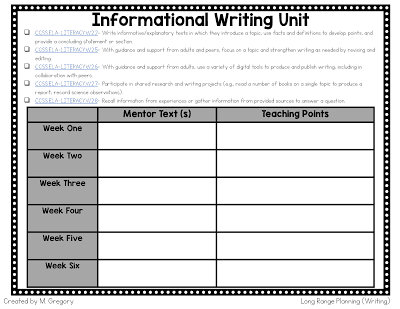





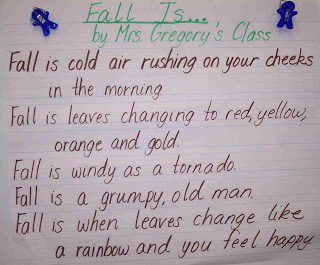
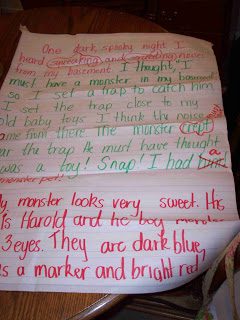



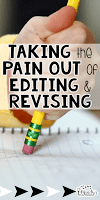
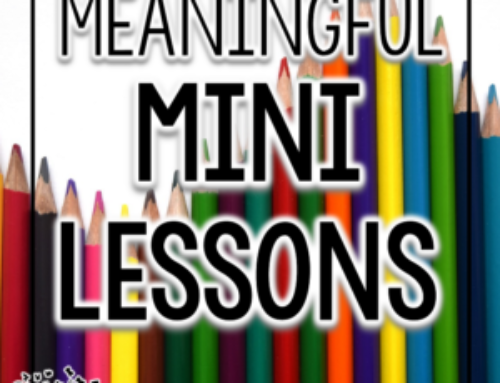
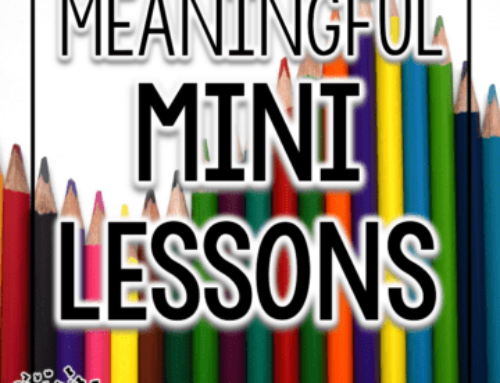

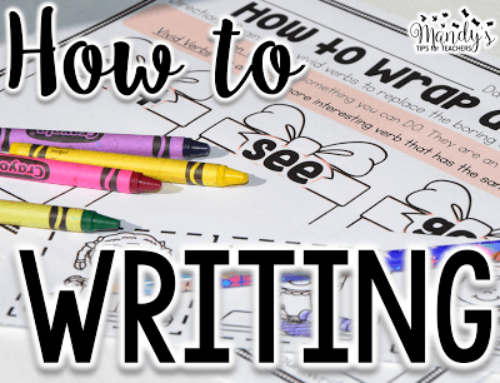

I agree teaching mini lessons is really effective. I do this before we do our main writing. The book that I use is Sheena Cameron's "The Writing Book. It has got some really excellent ideas for mini writing. I have no connection with her other than using her book which is the best writing book I have ever used. She does have a web site. http://www.thewritingbook.com/ Using the book has really lifted my children's writing. I can thoroughly recommend it.